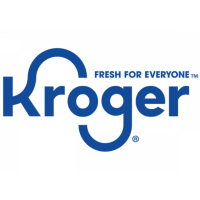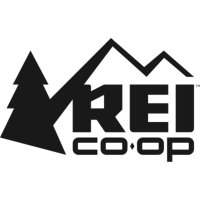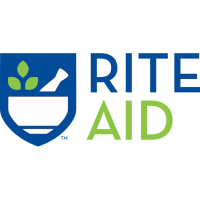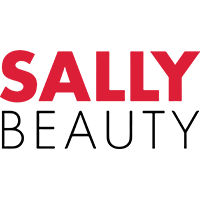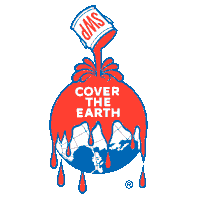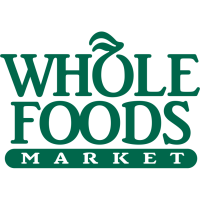Recommendations
Retailers remain on the frontlines of consumer discontent with hazardous chemicals and plastics in everyday products and packaging.
The 2024 Retailer Report Card shows that many of the largest retailers in the United States and Canada continue to make meaningful progress toward reducing and eliminating toxic chemicals and plastics, adopting policies to ban dangerous chemicals like PFAS and restrict harmful plastics such as polyvinyl chloride (PVC).
However, far too many retailers have failed to demonstrate even minimal progress on chemical safety, with 17 out of the 50 retailers evaluated in this report card receiving failing grades.
Retailers face substantial financial and regulatory risks associated with toxic chemicals and plastics. In the U.S., tired of inaction at the federal level, an increasing number of states in all areas of the country are banning chemicals and plastics of high concern in consumer products. To stay ahead of regulation, retailers need to proactively understand the chemical content of the products they sell, moving away from chemicals and plastics of high concern.
Retailer reputation and customer loyalty are also in jeopardy. Relying on the chemical industry and product manufacturers to self-police themselves will not satisfy the concerns of millions of consumers who are voting with their dollars and demanding greater transparency, safer products, and justice for Black people, Indigenous people, and other people of color who are disproportionately impacted by toxic pollution.
Retailers must also recognize the clear link between toxic chemicals, oil and gas, plastic pollution, and our climate crisis. Taking action on toxic chemicals and plastics is central to solving the problems we face with the continued use of fossil fuels. At the same time, the rush to reduce, reuse, recycle, and compost to create a “circular economy” will be an utter failure if it remains a toxic economy. It is time for retailers to recognize these connections and take bolder actions.
Recommendations for retailers:
Every major retailer should align the development and implementation of safer chemicals policies with the Four Essential Elements for a Safer Marketplace:
![]() Corporate Commitment
Corporate Commitment
Adopt and publish a bold safer chemicals policy demonstrating a corporate commitment to eliminating the use of chemicals and plastics of high concern and implementing safer solutions in products, packaging, manufacturing, and operations. This policy should have senior management-level engagement and accountability for suppliers, and should require that retailers measure and publicly report on progress. Companies should participate in the Chemical Footprint Project (CFP) Survey and support public policy to drive down demand for hazardous chemicals and plastics and advance safer solutions.
![]() Transparency
Transparency
Embrace “radical transparency” to meet rising consumer demand for the full public disclosure of chemical ingredients in products and packaging, including fragrance and other generic ingredients; require full disclosure of ingredients in both formulated products and articles to retailers and consumers; and advance accountability measures (e.g. through product testing) to ensure supplier accountability with retailer chemical restrictions. Companies should also measure and disclose their chemical footprint. For retailers with a more diverse customer base, any public-facing chemical information, including but not limited to chemical hazard notices and chemical policies, should be translated into Spanish and other languages in order to enhance accessibility to health-relevant information.
![]() Ban the Bad
Ban the Bad
Adopt and implement a restricted substance list and manufacturing restricted substance list for both private-label and brand-name suppliers in key product and packaging categories, restricting both chemicals and plastics of high concern. Set clear, ambitious public goals with timelines and quantifiable metrics to eliminate chemical classes and plastics of high concern. Target the chemicals and plastics on the Ban the Bad Priority List for reduction and elimination, at a minimum, and build from there to tackle an even larger list of highly hazardous chemicals and plastics.
![]() Safer Solutions:
Safer Solutions:
Adopt a definition of “safer alternative” consistent with that of Washington state, with minimum criteria for safety, and integrate it into their procedures as they both source new products and reformulate chemicals and plastics of high concern. Invest in assessing safer alternatives using tools like GreenScreen® for Safer Chemicals and ChemFORWARD to ensure informed substitution, and only use chemicals on a “positive list” of GreenScreen® Benchmark-2, ChemFORWARD Band C, or higher or equivalent. Companies should also invest financial resources to help fill data gaps on alternatives to hazardous chemicals and plastics and develop new safer solutions. The Safer Chemistry Impact Fund, supported by Apple, among others, is one example in this space. Finally, companies should annually measure and disclose the number or percent of UPCs within a major product category that meet hazard-based, third-party safer chemicals standards, such as EPA Safer Choice, or disclose a ChemForward ingredient Intelligence report for at least one major product category.
Retailers not yet evaluated should anticipate being graded in the future editions of the Retailer Report Card.
As chemical regulation increases, retailers must act. Retailers can mitigate regulatory risks and get ahead of the curve by adopting and implementing ambitious safer chemicals policies. The time is now to “mind the store.”
Recommendations for governments:
To facilitate the transition to an economy based on safer chemistry, governments should do the following:
- Adopt a hazard framework: Policies based on a hazard framework consider the inherent hazard of a chemical or plastic as the screen to determine whether it is a chemical or plastic of high concern. Chemicals that are inherently highly hazardous, such as carcinogens, mutagens, reproductive toxicants, and persistent bioaccumulative and toxic (PBTs), should be prioritized for phase-out and should not be considered as acceptable substitutes for other chemicals of high concern.
- Require transparency and hazard assessment: Demand for safer chemicals already exists across socio-economic groups. However, only with full access to chemical information can downstream industry, retailers, and consumers grow a market for safer chemistry and assess their progress toward supporting this sector. Legislation to increase transparency is increasingly being enacted across the country, as well as internationally, including states such as California, Maine, Minnesota, New York, Oregon, Washington, and Vermont.
- Phase out chemicals and plastics of high concern: Governments should take immediate action to phase out the use of the most hazardous plastics and chemicals and regulate them by class on the basis of hazard.
-
- Prioritize the most hazardous chemicals and plastics for phaseout. The most hazardous chemicals and plastics should be phased out immediately where safer solutions exist, including where the chemical is not needed or where alternative materials or chemicals can be used.
-
- Regulate chemicals by class. Regulating chemicals in groups, such as by shared chemical structure or by similar health or environmental harms, can save time and resources by avoiding the one-by-one chemical evaluation paradigm. More importantly, regulating classes of chemicals leads to increased environmental and health protections by avoiding the replacement of one toxic chemical with another that is structurally similar and equally toxic but less well characterized. Also, regulating similar chemicals that cause the same health or environmental harms recognizes the cumulative impacts they can have on vulnerable groups. For most chemical classes, information on toxicity and other hazardous properties is only available for a small number of members of the class. The failure to use a class-based approach leads to delays in evaluation and regulation for the data-poor chemicals.
-
- Adopt procurement policies: Governments have enormous purchasing power that can be leveraged to drive change and safeguard the health of government workers. Governments, from local towns, cities, and states to the federal government, should adopt procurement policies to phase out the purchase of products, from office and cleaning supplies to building materials, purchased by governments that contain toxic chemicals and plastics. Many leading cities and states, from San Francisco to New York state, have already adopted procurement ordinances and executive orders to purchase products free of harmful chemicals and materials, such as PFAS and PVC plastic.
- Support the adoption of safer solutions: Safer chemistry is a critical component of safer solutions to chemicals of high concern. In the absence of strong incentives to adopt safer solutions, manufacturers can and have eliminated chemicals of high concern only to adopt regrettable substitutes of equal or greater hazard. EPA’s Safer Choice has proven to be an extremely effective voluntary, market-driven program that has resulted in the reformulation of hundreds of products by both large and small manufacturers. Expanding Safer Choice to cover additional product categories, especially beauty and personal care products, would extend this success, providing safer options to consumers and making it easier for retailers to sell safer products. Using the purchasing power of states and the federal government to expand the market for safer solutions, particularly those that are Safer Choice Certified, would increase the supply of these products and lower their market price.Safer solutions have not been identified for all uses of hazardous chemicals. In part, this is because alternative chemicals and materials have not been assessed for hazard to ensure that they are truly safer. In other cases, innovation is needed to develop safer solutions. Additionally, retailers, manufacturers, and governments often lack information about chemical ingredients in products.Government resources should be dedicated both to the identification of existing safer solutions and to the development of new safer chemicals and materials (e.g. safer alternatives to PFAS in product categories where substitution has been more challenging). It is also important to ensure that government funding for climate solutions requires that those solutions also use safer chemistry.
- Adopt a strong Global Plastics Treaty: As leaders around the world finalize the negotiations for a Global Plastics Treaty, the U.S. and governments around the world must ensure that the treaty leads to a phase-out and reduction of the most toxic plastics and dangerous chemical plastic additives, and that the treaty ensures these chemicals are also restricted in recycled materials.

The 2024 Report
- I. Executive Summary
- II. Introduction
- III. Grades
- IV. Leaders and Laggards
- V. Key Findings
- VII. Resources
- VIII. Methodology
- IX. About this Report
More
Select a retailer
Tell retailers that got an “F” to step up and make toxics elimination a priority.




















